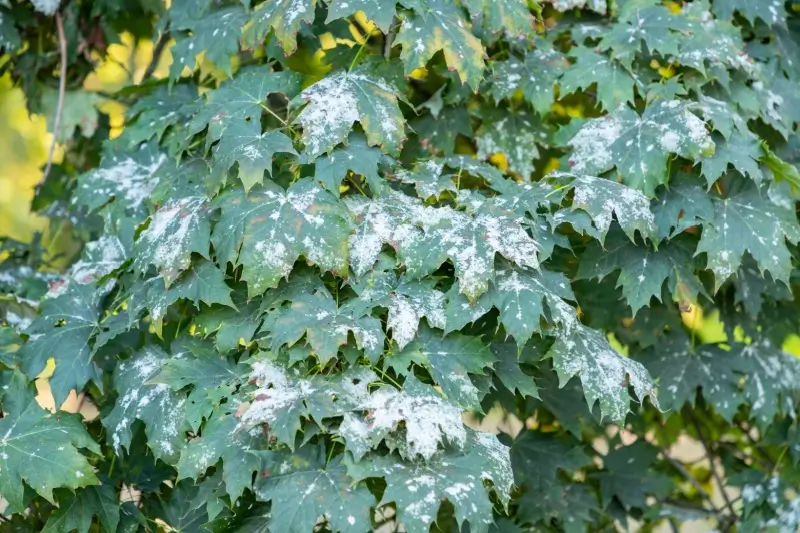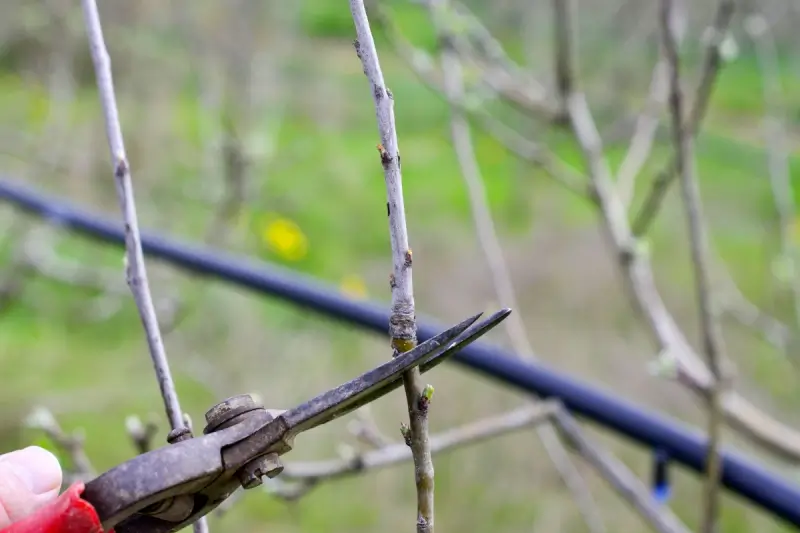Powdery Mildew Treatment and Prevention

Powdered sugar belongs on doughnuts, waffles, and strudels, not on your plants. If you do notice a white, powdery substance on the leaves and stalks of your garden plants, shrubs, or trees, you likely have a case of powdery mildew. Powdery mildew comes in many forms and is a common fungal disease that impacts many plants throughout Canada. Unfortunately, our Canadian spring and summer climate offers the ideal growing conditions for this white mould.
The good news is that this white fungus is rarely fatal for your plants. It does, however, steal nutrients, harm their leaves, and weaken their overall health, which makes them more susceptible to other, potentially fatal, diseases. That’s why powdery mildew treatment and prevention are so important to maintaining the overall health of your landscape.
Table of Contents:
What Does Powdery Mildew Look Like?
.webp)
Sometimes, it can be difficult to see fungal attacks on your plants. Not so with powdery mildew. This white fungus leaves a very noticeable calling card in the form of a white to greyish powdery coating on plant surfaces. It often looks like the plants have been coated in powdered sugar or talcum powder. You can also easily brush the powder off your plants.
Typically, powdery mildew starts to show on the upper sides of leaves, but it can spread to stems, buds, flowers, and fruits. In the most severe cases, it can cover the entire leaf’s surface. Over time, the leaves of an infected plant may begin to twist and curl and may turn yellow, brown, or black.
What Causes Powdery Mildew on Plants?
Powdery mildew is a fungal infection. Fungi spreads by releasing spores into the air and water. Often, an outbreak will begin when powdery mildew spores are carried by the wind and land on your plants. If you’ve experienced an infection before, dormant spores in the soil can also trigger a new outbreak. Certain conditions support the spread of this white mould.
Powdery mildew loves moderate-to-warm temperatures (15-27 degrees Celsius), low light, and high humidity. In many parts of Canada, late spring to early fall provides the optimal conditions for powdery mildew to thrive. Coastal areas with higher humidity are more likely to see outbreaks than the drier prairie regions of the country.
Powdery Mildew Treatment: How to Get Rid of Powdery Mildew
Powdery mildew can slowly harm the health of your plants, taking away from the aesthetic beauty of your garden and trees and increasing the chances it will spread to other parts of your landscape. So, how to get rid of powdery mildew?
Removal of Powdery Mildew

One of the first steps you can take is to prune the leaves or branches of an infected tree or plant. If you have an extensive garden and/or a lot of trees on your property, consider professional tree care to check your plants and prune your trees on a seasonal basis. Make sure to dispose of infected branches and clippings and to rake and clean the areas under trees and plants.
Organic Powdery Mildew Treatment
If you prefer more natural solutions to treat this white fungal infection, you have a few options for homemade remedies. You can try neem oil or add it to other homemade mixtures to provide a heavier punch.
Baking soda is another popular solution. To make this mixture, combine one tablespoon of baking soda and one teaspoon of liquid soap in four litres of water. Spray the mixture on the infected areas of your plants.
Got milk? It could help rid you of your powdery mildew. Mix one part milk with three parts water and spray it on infected plants. A milk spritz also works well as a preventative measure to prevent powdery mildew.
Fungicides
One of the quickest and most effective ways to eliminate a powdery mildew infestation is with a visit to your nearest gardening centre or home improvement store. There you can pick up a fungicide that is specifically designed to treat powdery mildew. These products typically contain potassium bicarbonate, myclobutanil, or propiconazole.
Powdery Mildew Prevention
Doing a little work upfront to prevent powdery mildew from getting a toehold on your trees and plants will save you a lot of time, frustration, and effort. The best powdery mildew prevention methods have to do with addressing the conditions that help the fungus develop and thrive.
Choose the Right Plants
If you’re just starting a garden, arbour, or landscape, consider choosing plants that are naturally resistant to fungal infections. An experienced gardener or landscaper can help you pick the right plants for your region, soil, and design vision.
Space Your Plants Properly
Good air circulation can help stave off fungal infections like powdery mildew. When planning out your garden and landscape, consider the spacing you will have between your plantings. A good rule of thumb is to space according to the average mature size of specific trees and plants. For example, when planting a shrub that grows 150 cm (5 feet) wide next to one that grows up to 90 cm (3 feet) wide, space the plants about 120 cm (4 feet) apart. This will provide adequate space for each plant when they reach maturity. If your current landscape is a little crowded, consider pulling up and replanting some of your landscaping to create more space.
Prune and Maintain Your Landscape
Another way to create space between your plants and promote good air circulation is to regularly prune and maintain your gardens and landscape. Removing excess growth and struggling or dead leaves and branches will improve the overall health of your trees and plants. Pruning also helps reduce the amount of shade, which can support fungal growth.
It’s best to prune trees and plants during dry weather to reduce the risk of spreading fungal diseases.
Water Early
.webp)
Another way to prevent powdery mildew is to keep your plants dry. Of course, you still need to water them, but consider using drip irrigation or soaker hoses so that water doesn’t hit the foliage. If you do use a hose or sprinklers, the best time to water your lawn and other plants is in the early morning hours. Watering early will provide sufficient time for your landscaping to dry before the evening.
Need Help with Powdery Mildew Prevention and Treatment?
Powdery mildew prevention and treatment requires vigilance and a lot of work. If you don’t have the time or inclination to spend your time fighting fungus, contact The Grounds Guys®. Our teams of experienced local experts are located throughout Canada. They’re ready to assist with your powdery mildew outbreak or any other issues your trees and/or plants are facing. We’ll also perform ongoing landscape maintenance for your home or business to keep your landscape healthy and beautiful, and your property looking its absolute best throughout the year.
Get started by requesting a free quote today!
This article is intended for general guidance only and is not applicable to every situation. You are responsible for determining the proper course of action for your property and situation. The Grounds Guys are not responsible for any damages that occur as a result of advice and/or guidance derived from its blog content. The Grounds Guys services may vary by location. Please contact The Grounds Guys franchise nearest you for more information.
 Click to call
Click to call


